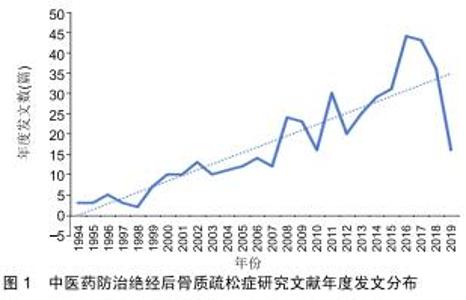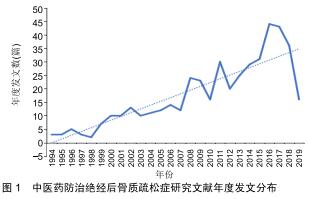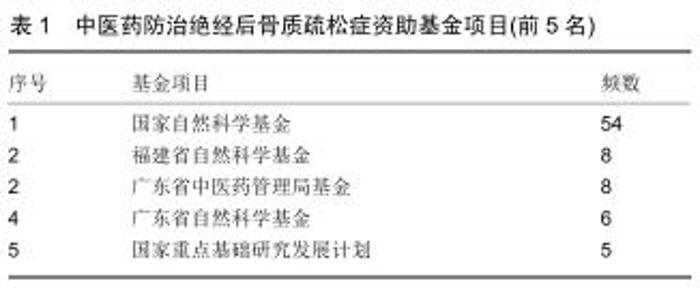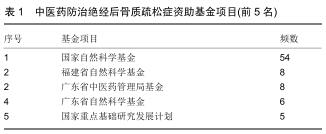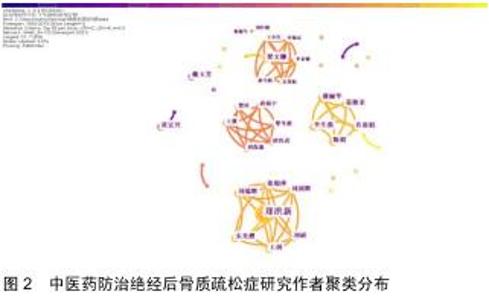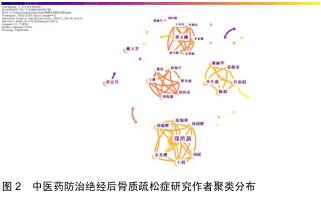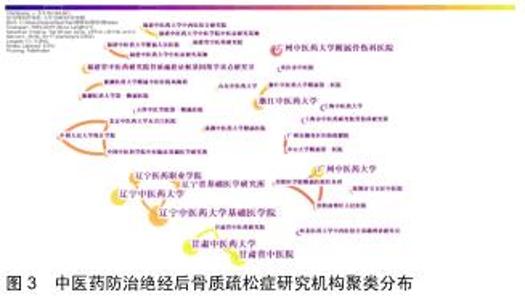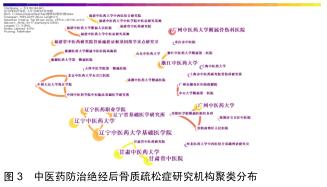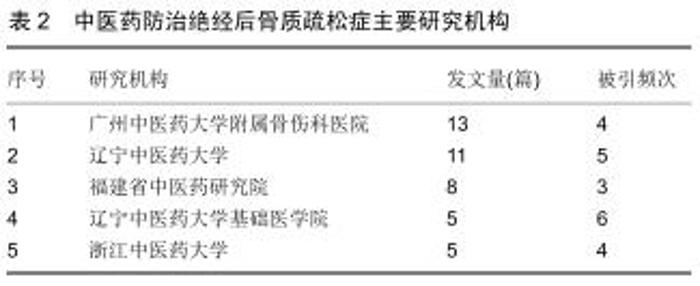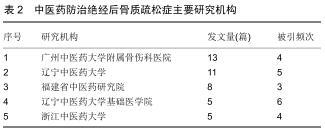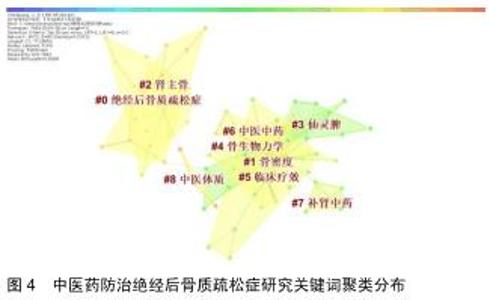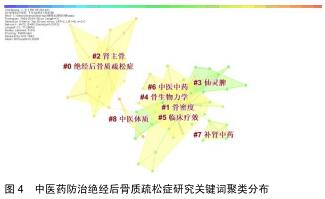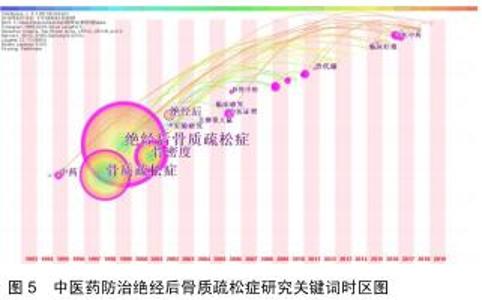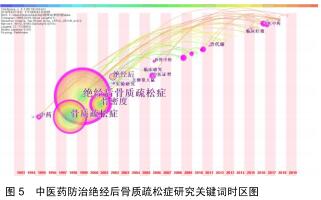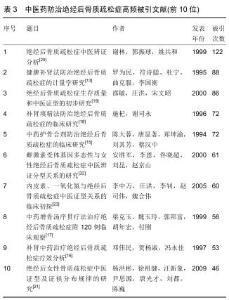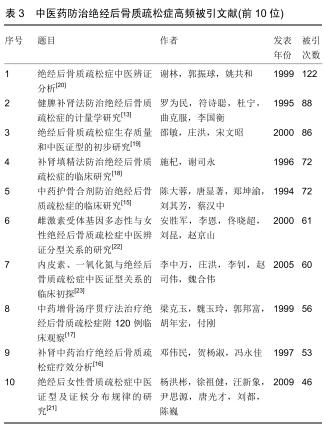|
[1] 李静,陈德才,王覃.2016年《美国内分泌医师协会与美国内分泌协会绝经后骨质疏松症诊疗指南》解读[J].中国全科医学,2017, 20(8):891-895.
[2] 原发性骨质疏松症诊疗指南(2017)[J].中国实用内科杂志,2018, 38(2):127-150.
[3] 葛继荣,郑洪新,万小明,等.中医药防治原发性骨质疏松症专家共识(2015)[J].中国骨质疏松杂志,2015,21(9):1023-1028.
[4] 卞庆来,邹小娟,沈霖.青娥丸治疗绝经后骨质疏松症肾虚血瘀证的疗效观察[J].中华中医药杂志,2018,33(1):308-312.
[5] 曾明,卢培,杨冰,等.金天格胶囊在绝经后骨质疏松症的治疗效果分析[J].中国骨质疏松杂志,2016,22(4):480-482.
[6] 王晓东,邓伟民,洪曼杰,等.护骨胶囊治疗绝经后妇女骨质疏松症的临床研究[J].实用医学杂志,2011,27(9):1662-1664.
[7] 王旭凯,王英,杨有庚.仙灵骨葆胶囊治疗绝经后妇女骨质疏松症的临床疗效观察[J].中国妇幼保健,2009,24(12):1707-1708.
[8] 肖亚平,曾杰,焦琳娜,等.补肾中药对骨质疏松症的治疗及其信号通路调节作用的研究进展[J].中国中药杂志,2018,43(1):21-30.
[9] CHEN C, DUBIN R, KIM MC. Emerging trends and new developments in regenerative medicine: a scientometric update (2000-2014). Expert Opin Biol Ther. 2014;14(9): 1295-1317.
[10] 陈悦,陈超美,刘则渊,等.CiteSpace知识图谱的方法论功能[J].科学学研究,2015,33(2):242-253.
[11] 侯剑华,胡志刚.CiteSpace软件应用研究的回顾与展望[J].现代情报,2013,33(4):99-103.
[12] 李杰.安全科学结构及主题演进特征研究[D].北京:首都经济贸易大学,2016.
[13] 罗为民,符诗聪,杜宁,等.健脾补肾法防治绝经后骨质疏松症的计量学研究[J].中国中医骨伤科,1995,3(2):1-4.
[14] 闫伟东.数字图书馆发展的可视化分析[J].公共图书馆,2012(1): 30-34.
[15] 陈大蓉,唐显著,郑坤渝,等.中药护骨合剂防治绝经后骨质疏松症的临床研究[J].中医杂志,1994,36(6) 359-361,324.
[16] 邓伟民,贺扬淑,冯永佳.补肾中药治疗绝经后骨质疏松症疗效分析[J].中国骨质疏松杂志,1997,3(1):64-66.
[17] 梁克玉,魏玉玲,郭邦富,等.中药增骨汤序贯疗法治疗绝经后骨质疏松症—附120例临床观察[J].中医正骨,1999,11(1):9-10,63.
[18] 施杞,谢可永.补肾填精法防治绝经后骨质疏松症的临床研究[J].上海中医药杂志,1996,30(10):206.
[19] 邵敏,庄洪,宋文昭.绝经后骨质疏松症生存质量和中医证型的初步研究[J].中医正骨,2000,12(5):9-10,63-64.
[20] 谢林,郭振球,姚共和.绝经后骨质疏松症中医辨证分析[J].中国医药学报,1999,11(3): 35-39.
[21] 杨洪彬,徐祖健,汪新象,等.绝经后女性骨质疏松症中医证型及证候分布规律的研究[J].四川中医,2009,27(4):23-25.
[22] 安胜军,李恩,佟晓旭,等.雌激素受体基因多态性与女性绝经后骨质疏松症中医辨证分型关系的研究[J].中国中西医结合杂志, 2000,20(12):907-910.
[23] 李中万,庄洪,李钊,等. ET、NO与绝经后骨质疏松症中医证型关系的临床初探[J].中国中医骨伤科杂志,2005,13(1):5-7,11.
[24] 梁文娜,李亚婵,李西海,等.绝经后骨质疏松症肾阳虚证证素变化与熵变的内在关系[J].中华中医药杂志,2014,29(6):1791-1793.
[25] 张月峰,韩景献.骨质疏松动物模型研究进展[J].动物医学进展, 2005,26(3):8-11.
[26] 易伟莲,廖德权,林柏云,等.绝经后骨质疏松症患者性激素、细胞因子及骨代谢指标的变化及关系[J].检验医学, 2012,27(4): 296-298.
[27] 郭文清,杜义斌.中医论治绝经后骨质疏松症的研究进展[J].中国民族民间医药,2016,25(5):29-31.
[28] CAI N, LI C, WANG F. Silencing of LncRNA-ANCR Promotes the Osteogenesis of Osteoblast Cells in Postmenopausal Osteoporosis via Targeting EZH2 and RUNX2. Yonsei Med J. 2019;60(8):751-759.
[29] FU Y, XU Y, CHEN S, et al. MiR-151a-3p Promotes Postmenopausal Osteoporosis by Targeting SOCS5 and Activating JAK2/STAT3 Signaling. Rejuvenation Res. 2019 Sep 23. doi: 10.1089/rej.2019.2239. [Epub ahead of print]
[30] ZHAO J, HUANG M, ZHANG X, et al. MiR-146a Deletion Protects From Bone Loss in OVX Mice by Suppressing RANKL/OPG and M-CSF in Bone Microenvironment. J Bone Miner Res. 2019;34(11):2149-2161.
[31] 李灿东,杨朝阳,林雪娟,等.体质、病理特点、证与健康状态的关系[J].中华中医药杂志,2011, 26(8): 770-773.
[32] 梁文娜,李灿东,李西海,等.绝经后骨质疏松症中医证素分布的临床研究[J].福建中医药大学学报,2012, 22(2): 11-13.
[33] 梁文娜,李西海,李亚婵,等.基于证素辨证探讨绝经后骨质疏松症中医病理状态辨识[J].中华中医药杂志,2016,31(1): 72-74.
|
